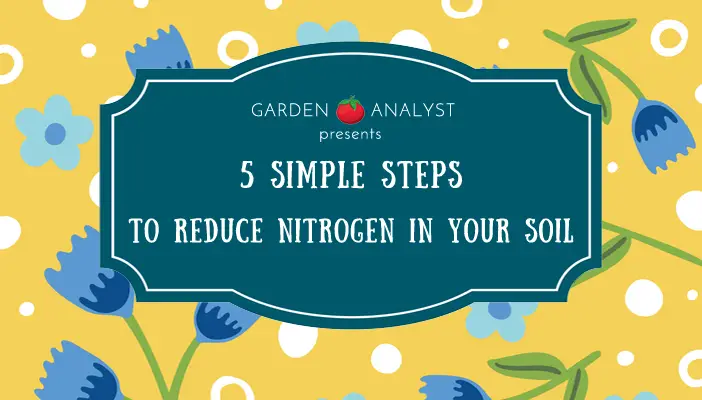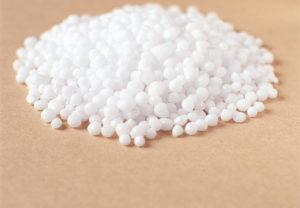Are your plant leaves looking burnt? Nitrogen heavy soil can be just as detrimental to plants as having lack of nitrogen. In this article, we explore 5 simple ways to help reduce nitrogen in your soil so you can get you garden back to a healthy, balanced level of nutrients.

Effects of high Nitrogen levels in your soil
Effects of high nitrogen in your soil can be visually identified by taking a close look at your plants. Here are some common effects of high nitrogen in your soil:
- Foliage overgrowth – the plants are redirecting energy into only producing excess foliage.
- Restricted flower growth – It may restrict the production of your plants reproductive organs(flowers) which produces the fruit and vegetables you are looking for. You will end up with a lot of green, but no vegetables or fruits.
- Stunted root growth – If all the plants energy is focused above the soil in creating new foliage and green growth, the roots will be ignored and plant stability can be compromised, which can invite disease.
- Burnt foliage – Leaf edges will appear wilted and start turning yellow and brown and will eventually destroy the plant.

Tips On How To Reduce Nitrogen In Soil
While there are many ways to help reduce excess nitrogen symptoms, most will require some patience but will guarantee that nitrogen is removed from your soil. Below are 5 methods to reduce nitrogen in your soil:
- Add sawdust or fine woodchips to your soil – the carbon in the sawdust/woodchips love nitrogen and will help absorb and soak up and excess nitrogen.
- Plant heavy nitrogen feeding plants – tomatoes, corn, broccoli, cabbage and spinach are examples of plants that thrive off nitrogen and will suck the nitrogen dry.
- Water – soaking your soil with water will help leach the nitrogen deeper into your soil, effectively leaving less for your plants to use.
- Sugar – In limited studies, it was shown that adding sugar to your soil can help potentially reduce the amount of nitrogen is your soil. Sugar is partially composed of carbon, an element which attracts and soaks up the nitrogen in the soil. This is similar concept to adding sawdust/woodchips which are high in carbon content.
- Do nothing – It may seem counter-intuitive, but if you already have plants that are producing lots of foliage, it may be best to let them continue to absorb all the nitrogen to amend the soil for your next crops.
As I state in most of my soil articles, the only way that you can surely be aware if you have excess nitrogen in your soil is to perform a soil test. If you are looking to purchase one to ensure your soil is in good health, I strongly suggest this soil test kit. Its cheap, effective, and gets the job done.
If you have any questions about gardening or issues that your dealing with, leave a comment below and I’ll get back to you ASAP. I’m always here to help!